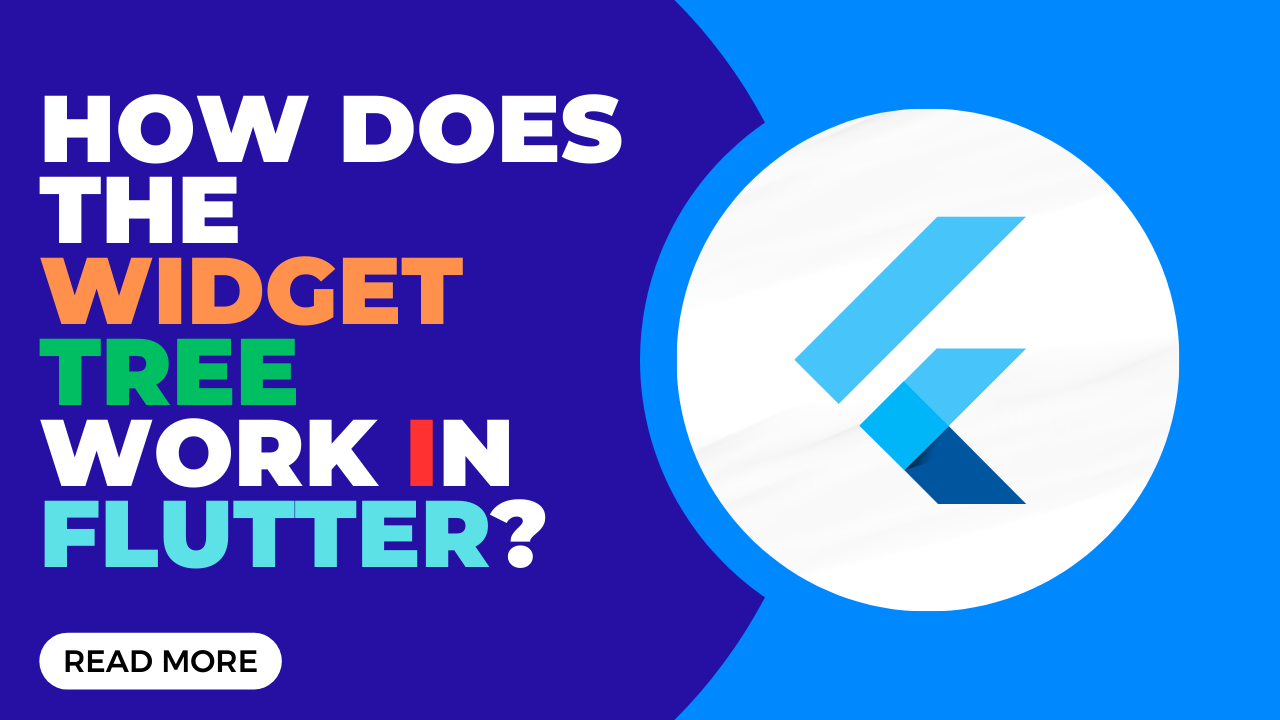Hello Learners! article: How does the widget tree work in Flutter?
In Flutter, everything is a widget, so it’s very important to understand that a widget is a hierarchical structure representing the UI components of a Flutter app.
The widget tree defines the layout, appearance, and behavior of the app’s user interface by composing multiple nested widgets together.
Understanding how the widget tree works is fundamental to building Flutter apps effectively.
Introduction
In Flutter, the widget tree is like a family tree that organizes all the visual elements (widgets) of your app. Every element you see on the screen, like text, buttons, or images, is a widget, and these widgets are arranged in a hierarchy (tree structure).
- Parent-Child relationship: Each widget can have one or more children, forming a tree.
For example, a Column widget (parent) can contain several Text widgets(children) inside it. - Top to Bottom: The widget tree starts with a root widget at the top (like the main app widget), and all other widget branch out below it in a layered structure.
- Building the UI: When Flutter creates the app’s interface, it builds it by traversing this tree, going from the top (parent widgets) to the bottom (child widgets), deciding how everything should look and behave on the screen.
- Rebuilding the Tree: Flutter is very efficient because it can update just a part of the tree when something changes. If you update a button’s label, only the button and its related widgets are rebuilt, not the whole app.
- Widget Types: There are two min types of widgets:
- Stateless widgets: These don’t change over time. For example, a text label that stays the same.
- Stateful widgets: These can change based on user interaction. For example, a button that updates its label after being clicked.
Widget Composition
- Widget are the building blocks of a Flutter app and are used to define the UI components.
- Widgets can be simple, like a Text widget for displaying text, or complex, like a ListView widget for displaying a scrollable list of items.
- Widget can be composed together in a hierarchical manner to create more complex UI layouts.
Hierarchical Structure
- The widget tree is organized in a hierarchical structure, with each widget having exactly one parent and zero or more children.
- At the root of the widget tree is the MaterialApp or CupertinoApp widget, which defines the overall configuration of the app, such as its theme and navigation.
Building Blocks How does the widget tree work in Flutter?
- Widgets are immutable, meaning they cannot be modified after they are created.
Instead, when a widget needs to be updated, a new widget is created with the desired changes. - Widgets are lightweight the efficient, allowing Flutter to efficiently rebuild only the portions of the widget tree that have changed rather than rebuilding the entire UI.
Reconciliation
- Flutter uses a process called reconciliation to efficiently update the widget tree in response to changes.
- When the app’s state changes or an event occurs, Flutter triggers a rebuild of the affected widgets in the widget tree.
- Flutter compares the new widget tree the previous widget tree and determines the differenced (diffs) between them.
- Only the widgets that have changed are updated, while unchanged widgets are reused to minimize unnecessary work.
State Management
- Widget in Flutter can be stateless or stateful.
- Stateless widget are immutable and do not have internal state. They rebuild every time their parent rebuilds.
- Stateful widget maintain internal state that can change over time. When the state changes, the widget rebuilds, updating its appearance based on the new state.
Hot Reload
- Flutter’s hot reload feature allows developers to quickly see changes made to the code reflected in the running app.
- When you make changes to the code, Flutter rebuilds the affected widgets in the widget tree and updates the UI without restarting the app.

Leave a Reply